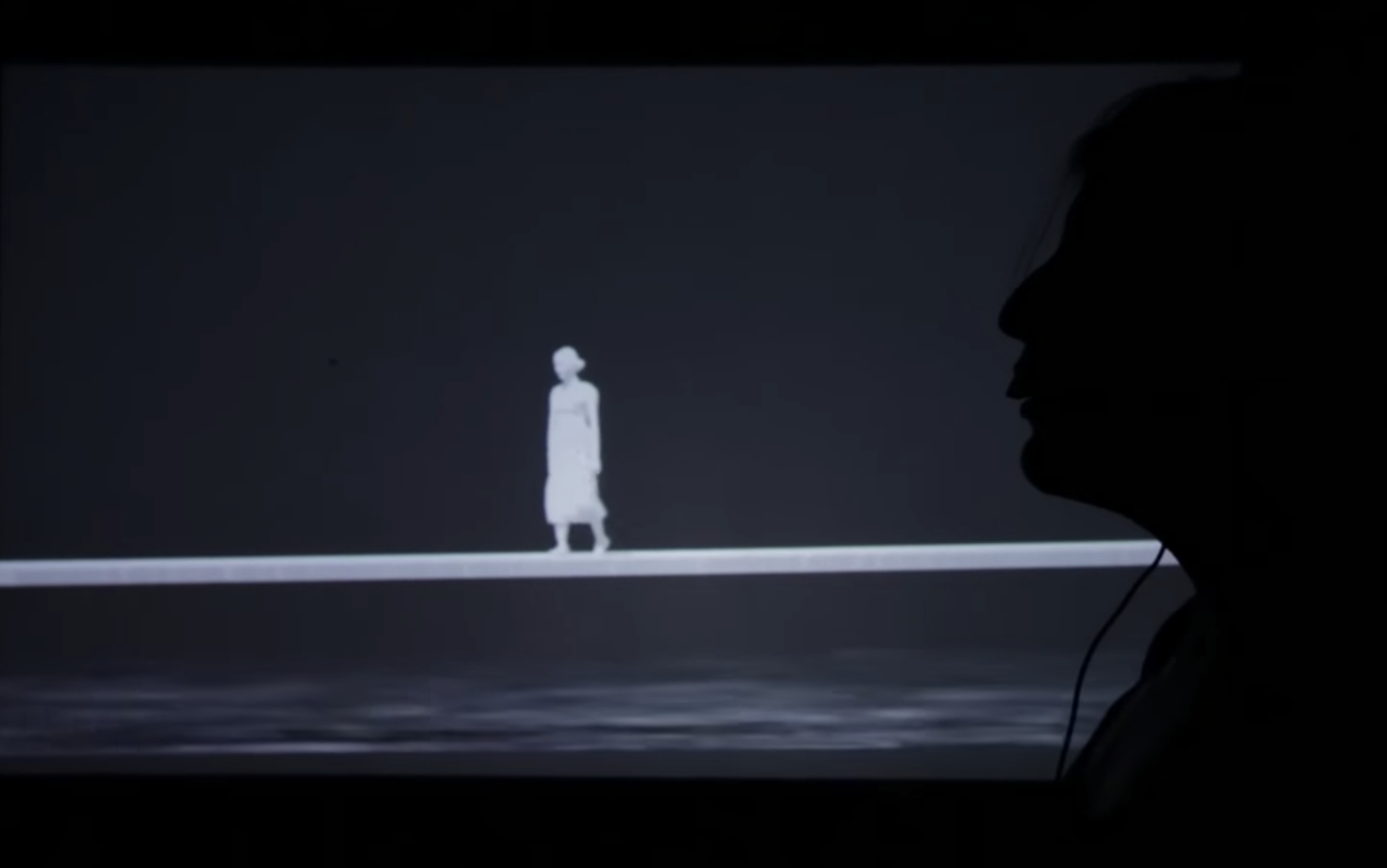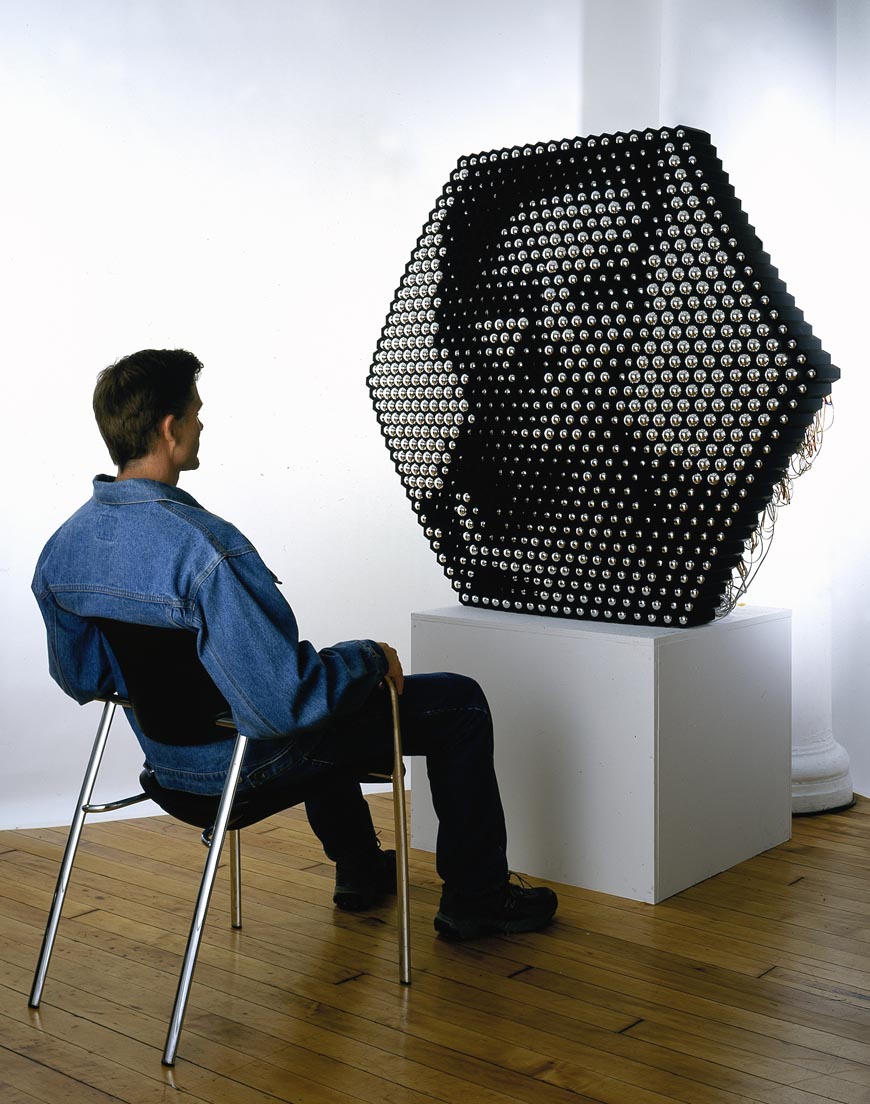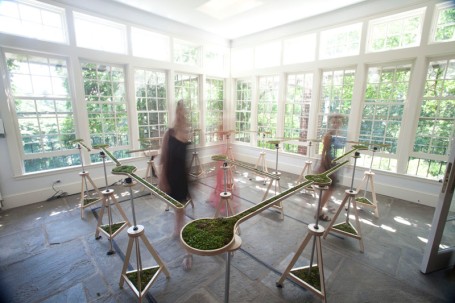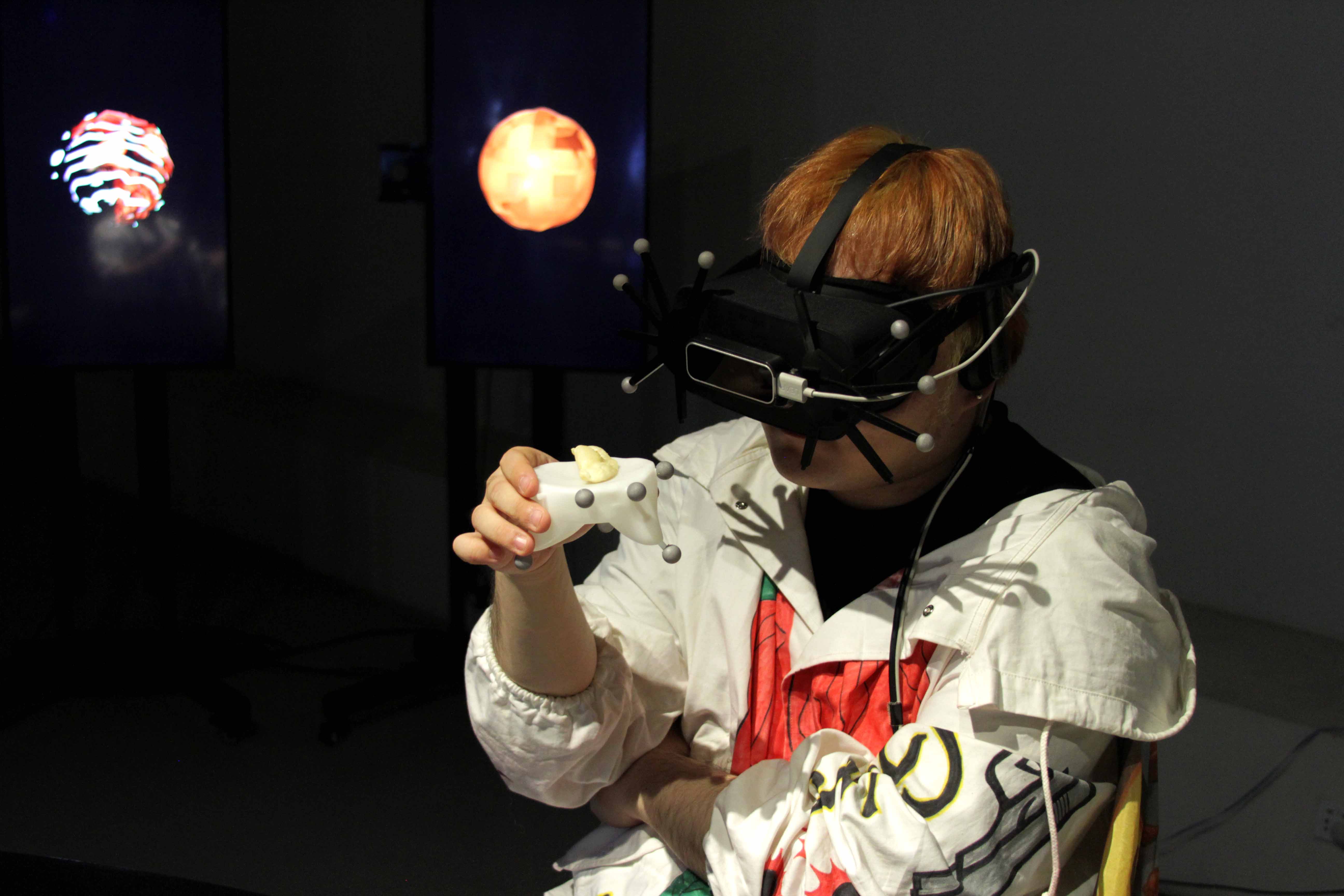
Nova Jiang's "Figurative Drawing Device" (link here) was exhibited at the New Wight Gallery in Los Angeles. This device requires two people, a designated tracer and the person to be outlined, and graphs the outline with imperfections that are clearly evident. I was drawn to this piece because of its personal and irregular nature. No two outlines would be the same and it was also dependent on the tracer. The device seems to be made up of a series of metal bars that translate the bigger outline of the tracer's drawing to something that could be fit into a sketchbook's size. Although overall, I love this piece, I wonder how the traces would look if the outline was completely black, creating a stronger contrast with the white paper's background. I respect the social and psychological elements in this piece within the relationships that it creates and also the fact that a single outline is not something that can be done quickly and perfectly. The poser must stay relatively still in poses that may be hard to maintain while the outliner must focus on doing his/her best in creating the drawing. Within completion, the drawing serves as an interpretation of the participants' combined effects, which is something I find exciting.






 Daniel Rozin has created many mechanical "mirrors" using video cameras, motion sensors, and motors to display people's reflections. I had seen the popular
Daniel Rozin has created many mechanical "mirrors" using video cameras, motion sensors, and motors to display people's reflections. I had seen the popular 




